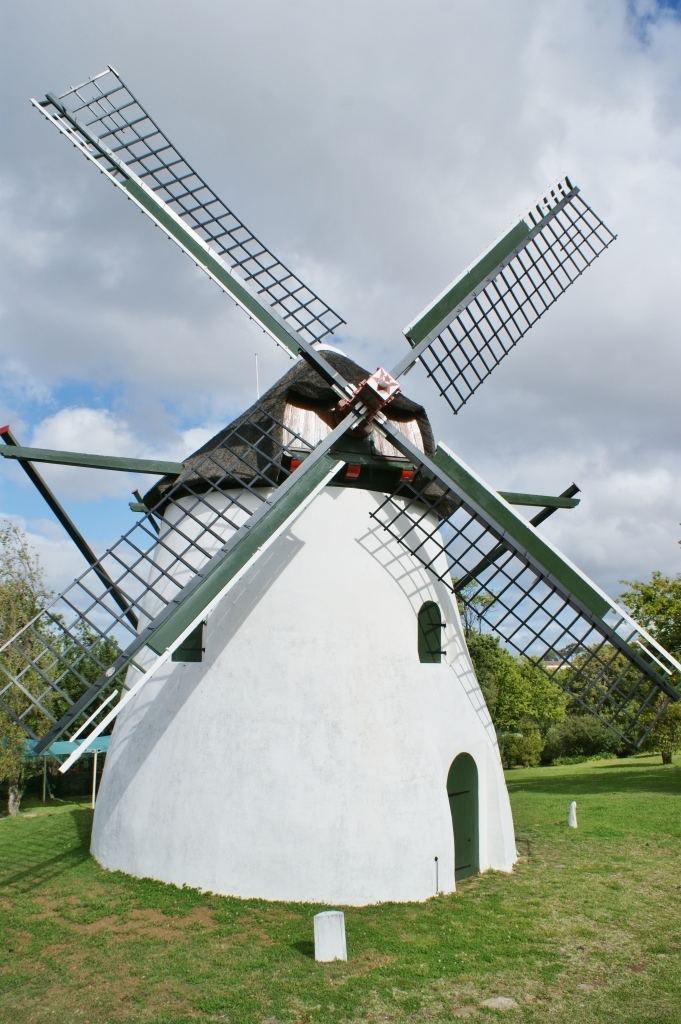Mill name Mostert's Mill Purpose Corn mill Storeys Three | Year built c1796 | |
 | ||
Operator(s) Friends of Mostert's Mill Similar Rhodes Memorial, Groote Schuur, Josephine Mill Museum, Irma Stern Museum, Devil's Peak | ||
Mostert's Mill (Afrikaans: Mostert se Meul) is a historic windmill in Mowbray, Cape Town, South Africa. It was built in 1796 and is the oldest surviving and only complete windmill in South Africa.
Contents
History
The mill was built around 1796 as a private mill on the farm 'Welgelegen', owned by Gysbert van Renen and was named after his son-in-law, Sybrand Mostert, after Van Renen's death. It was the first privately owned mill in Cape Town. Prior to the British occupation of the Cape in the Battle of Muizenberg in 1795, only mills controlled by the Dutch East India Company were allowed. Mostert's Mill had ceased working by 1873 but was owned by the Mostert family until 1889, when it was sold to a Mr Wilks, who sold it in 1891 to Cecil Rhodes. The mill became derelict but a restoration was undertaked by the Dutch millwright Christiaan Bremer. The restored mill was opened on 1 February 1936 by Dr Lorentz, the Minister Plenipotentiary and Envoy Extraordinary to the Netherlands. The ceremony was attended by the Prime Minister, General Hertzog and flour was ground for the guests.
The mill was worked on occasion but it again became derelict during the Second World War. In 1986, the windshaft broke and the sails crashed to the ground. The Vernacular Architecture Society of South Africa started a campaign to preserve the mill, leading to the formation of the Friends of Mostert's Mill in 1993. A further restoration in 1995 by Dunning-Bremer returned the mill to working order again at a cost of R245,000.
Description
Mostert's Mill is a three storey tower mill. The tower is 7.94 metres (26 ft 1 in) in diameter externally at ground level and is 6.68 metres (21 ft 11 in) high. It is constructed of random stone for the first 2.28 metres (7 ft 6 in) and then unbaked bricks above. The walls are 1.15 metres (3 ft 9 in) thick at ground level, giving the mill an internal diameter of 5.64 metres (18 ft 6 in).
The cap is of a truncated cone shape and is covered by thatch. The mill has four common sails and is winded by a tailpole. The four, modern, common sails follow the Dutch tradition, as there was no surviving sail to copy when Bremer restored the mill in 1935. Those fitted at the 1935 restoration were 6.00 metres (19 ft 8 in) long and 1.75 metres (5 ft 9 in) wide, fitted with a windboard on the leading edge. Such a feature was not to be found on other South African windmills. The sails, which have a span of 14.45 metres (47 ft 5 in), were carried on a teak windshaft. This was fitted with a cast iron poll end in 1935, because the terminus of the wooden shaft has rotted. Contemporary South African windmills all had wooden windshafts, apart from one of the Salt River windmills, which had an iron cross. A replacement windshaft made of iroko was fitted in 1995. The windshaft carries a clasp arm brake wheel, which has a diameter of 770 millimetres (2 ft 6 in) and has 47 cogs. It drove the single pair of millstones, via a lantern pinion stone nut, which has 16 staves. The millstones comprise the original runner stone and a non-original bedstone. The latter is a Cullen stone installed in 1935 and came from a windmill at Leens, Groningen, Netherlands.
Location and access
Mostert's Mill is situated on the M3 close to the University of Cape Town on the slopes of Devil's Peak where it is a prominent landmark. The Friends of Mostert's Mill operate the mill and it is open to the public on one Saturday a month between 10:00 and 14:30.
